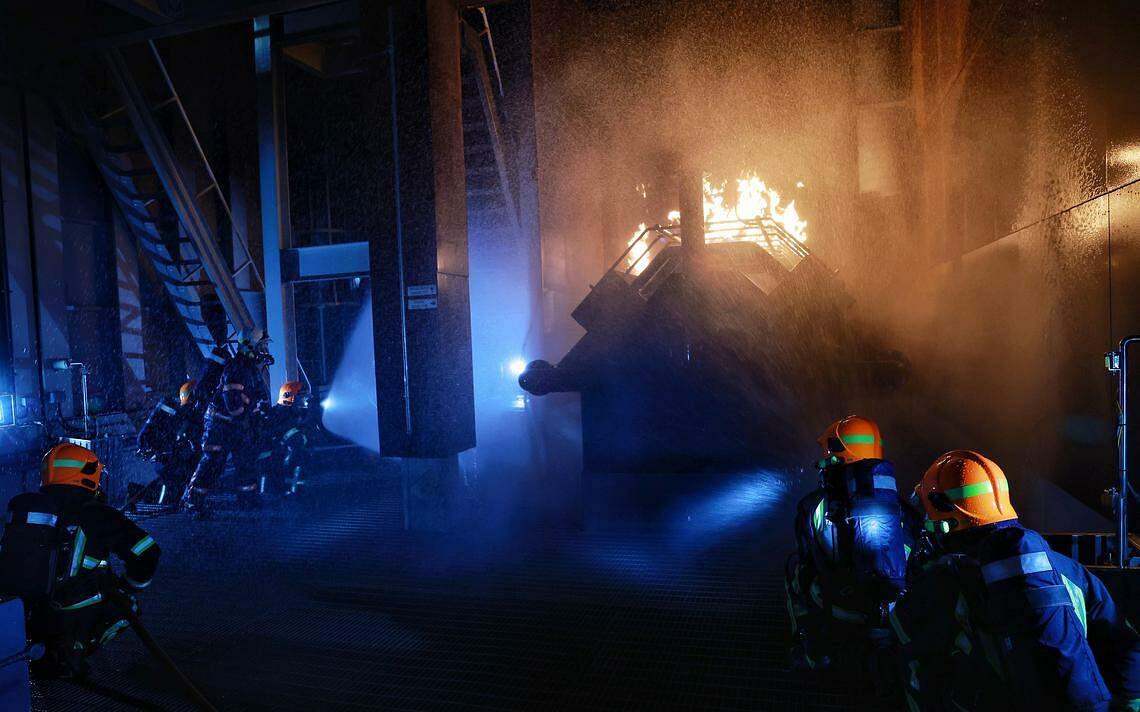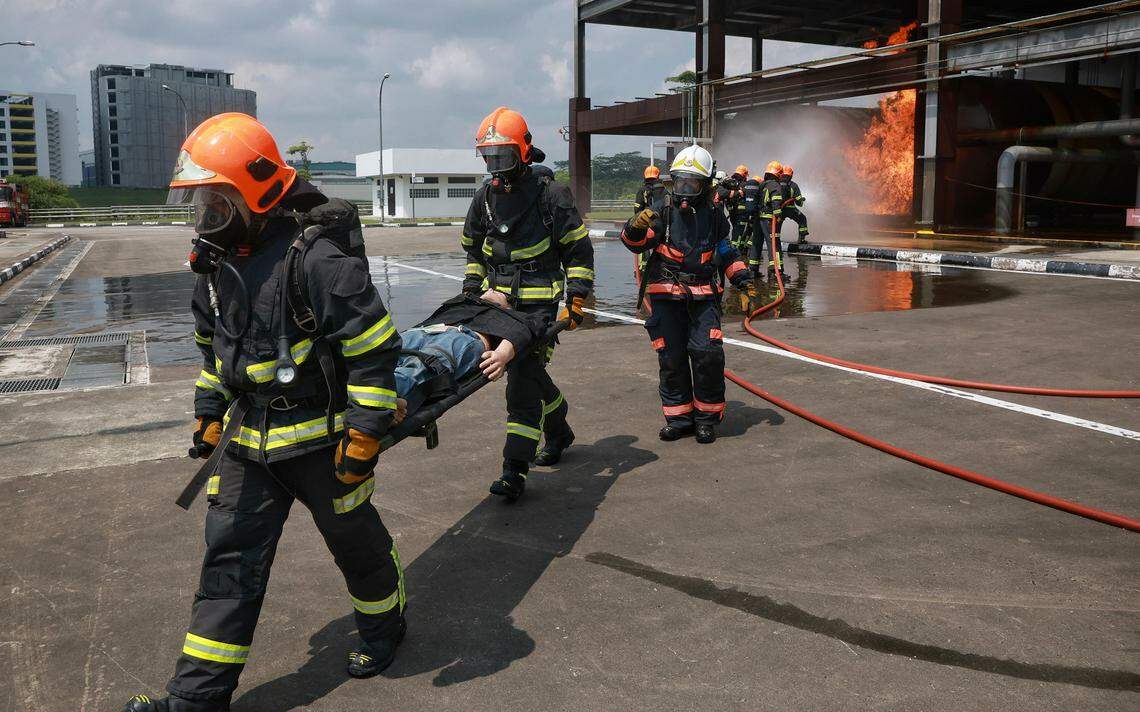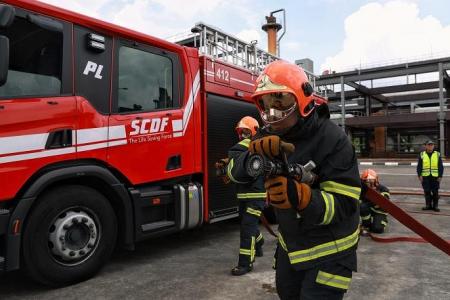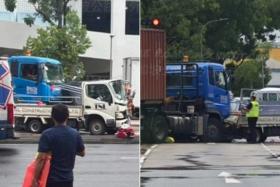Live fire simulations part of SCDF’s firefighting training for NSFs
Firefighters must access a fire hydrant, connect a hose to the fire engine and set off the water jets to fight a blaze - all within 85 seconds.
Firefighters go through rigorous practical and theoretical training as Singapore Civil Defence Force (SCDF) national servicemen (NSFs) before being deployed as first responders.
On Monday, in reply to questions by Mr Murali Pillai (Bukit Batok) and Workers’ Party MP Gerald Giam (Aljunied GRC), Minister of State for Home Affairs Muhammad Faishal Ibrahim said all SCDF NSFs must be certified medically fit and meet the physical employment standard (PES) of PES A, B1 or B2 to be deployed as firefighters.
They also need to complete a four-week Basic Rescue Training course and a 12-week Firefighter Course (FFC).
The FFC includes theoretical and practical components, and a series of proficiency and certification tests, including the Individual Physical Proficiency Test, Breathing Apparatus Proficiency Test (BAPT), Hazmat Responder Certification Test and Firemanship Skills Assessment.
SCDF trains 500 NSFs annually.
The FFC’s practical components include fighting “live” fires and training conditions simulating actual operational conditions so that they can perform proficiently and safely during real fires and rescue emergencies.
At the Home Team Tactical Centre on Tuesday, the trainees demonstrated various drills they learn in FFC.
The training ground in Mandai houses various buildings, including oil refineries and a leaning building, and vehicles to simulate as many real-life situations as possible.
Assistant Commissioner Alan Chow, the Civil Defence Academy’s director, said on Tuesday that the training is set out to mimic as many real-life environments as possible, even accounting for variables such as the weather and the number of casualties.
“The reality on the ground is that no incident is perfect, and we have to be prepared,” he said.
Each drill is supervised by a conducting officer and at least one safety officer, who ensures that safety standards are met and checks on the well-being of the trainees.
Wearing 20kg of personal protective equipment (PPE), the trainees work in a four-man section for each drill.

Turning on fire hydrants to generate water supply is a basic drill that all firefighters learn in the first phase of their training. They have to get water from a fire hydrant to the fire engine within 45 seconds, and water jets spouting within 40 seconds.
The NSFs are also trained to handle different types of fires, such as engine room fires, flashover fires - fires that occur simultaneously when there is combustible material in an enclosed area - and ship fires that emerge from pipes and engines.
For oil refinery scenarios, teams of trainees learn to put out liquefied petroleum gas tank fires and rescue casualties.

Private Allanson Tan and Private John Villanueva, who are in their 10th week of FFC, spoke of the physical and mental demands that come with the training.
Pte Tan, 19, recounted how he struggled physically during BAPT and wanted to give up.
“But I looked behind, and I saw my teammates trying just as hard as I was. I looked in front and my teammate was asking me to follow him. They inspire me. I just have to push ahead,” he said.
Pte Villanueva, 18, said that despite the physical and mental challenges, the training gives him more confidence to face real-life firefighting scenarios.
He added: “Surprisingly, I am not worried about fires on site because I’m trained, and I have this muscle memory, so much so that when I turn up for fires, I am confident that I know what to do.”
Get The New Paper on your phone with the free TNP app. Download from the Apple App Store or Google Play Store now


